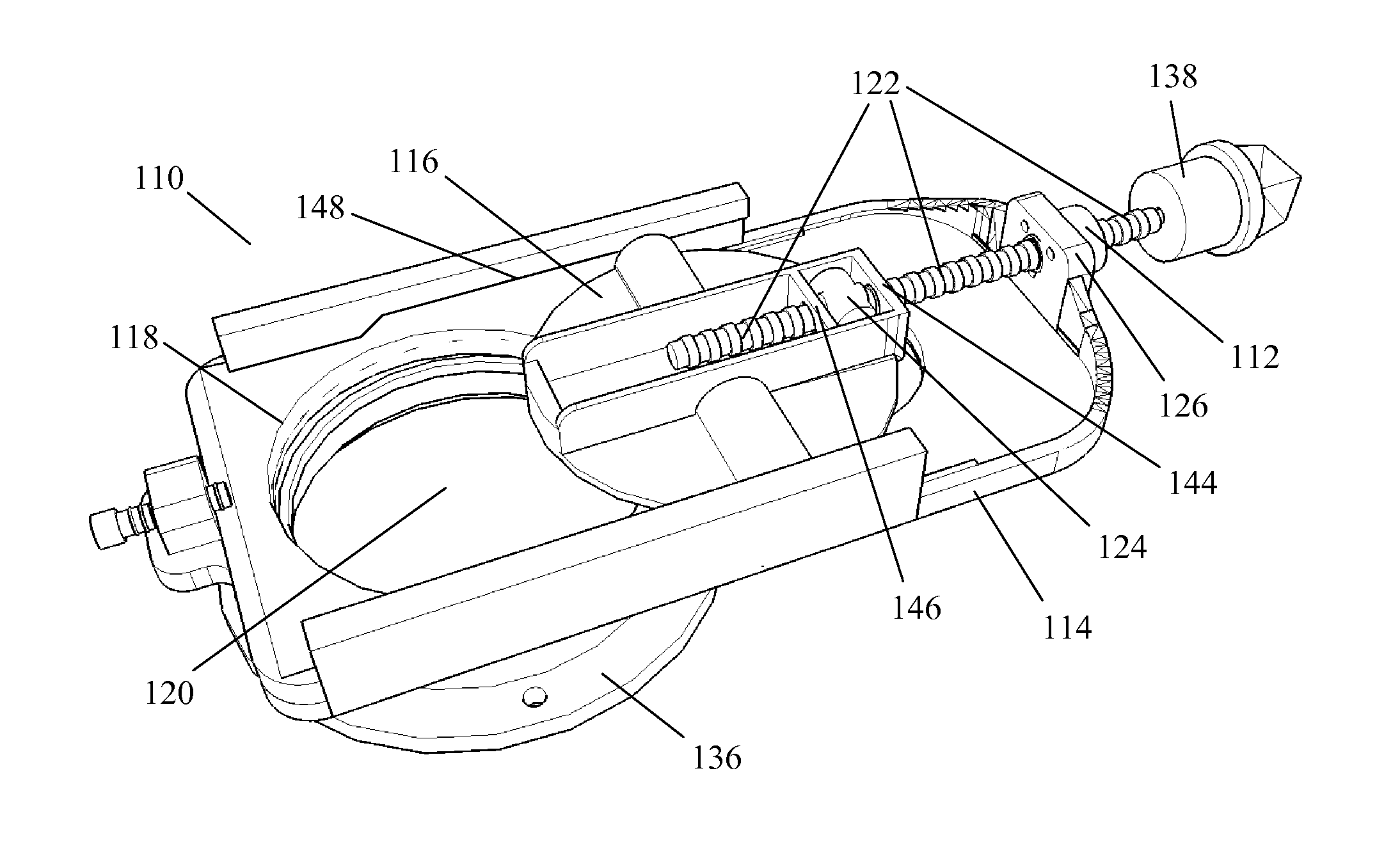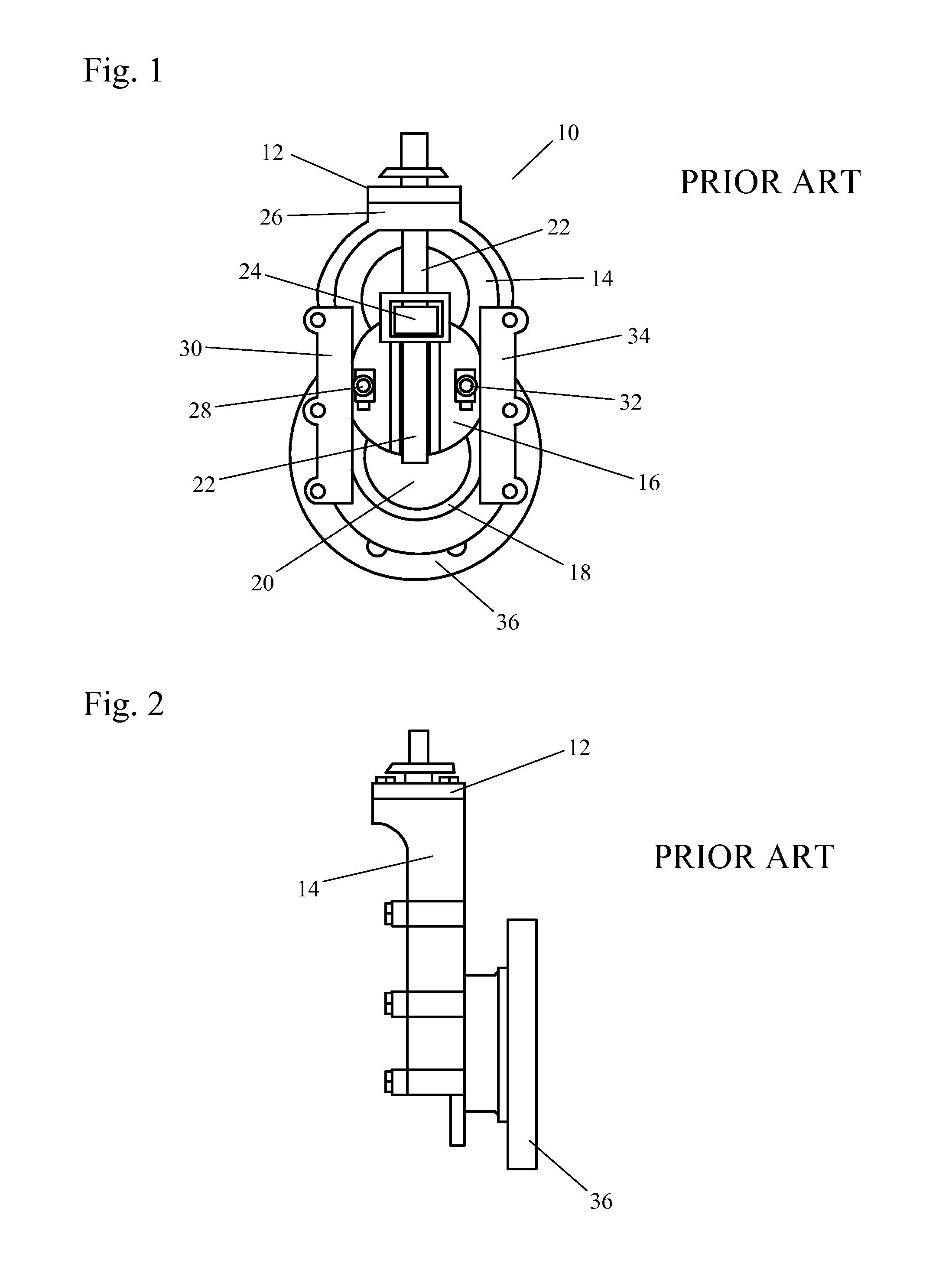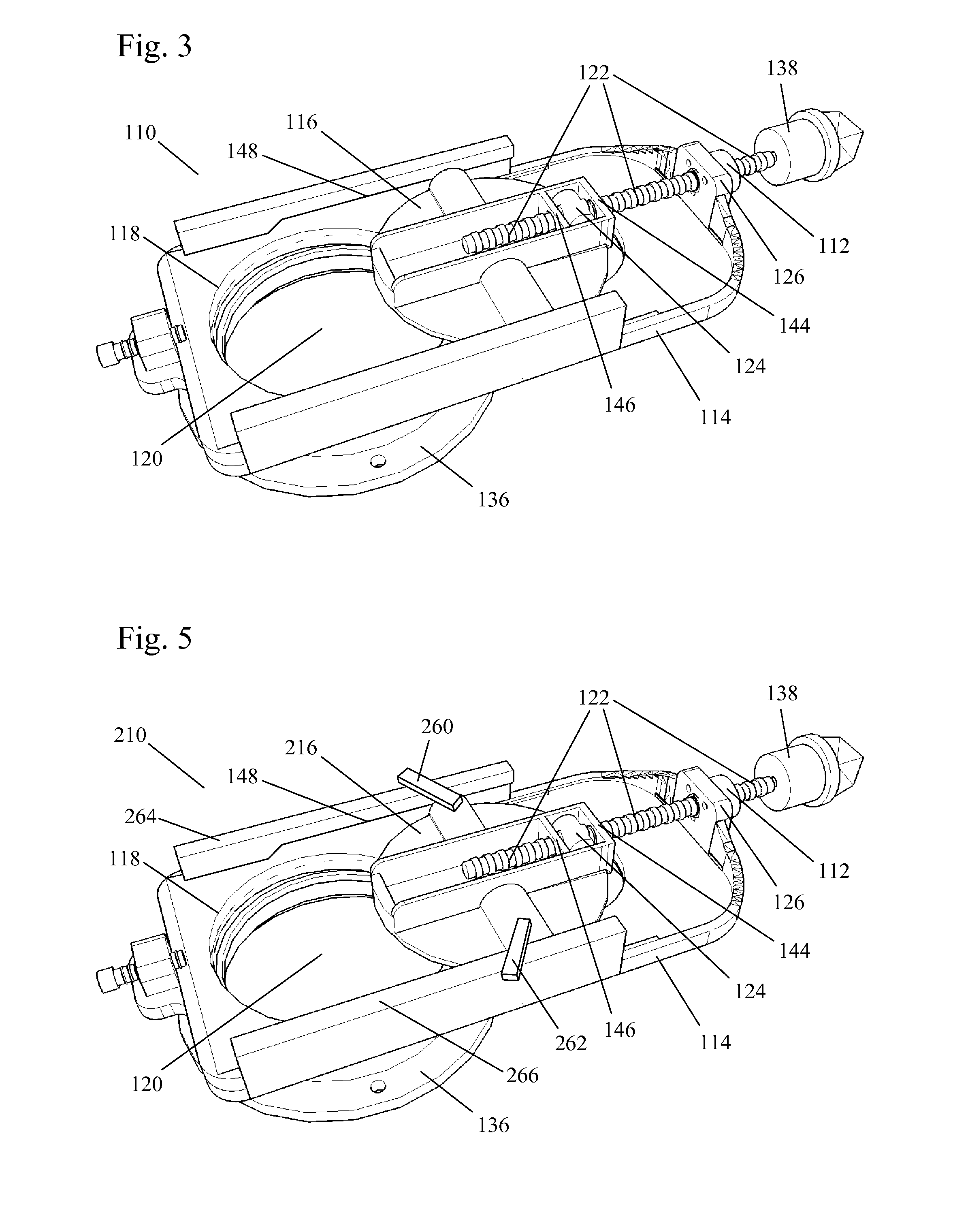Sluice gate valve
a sluice gate valve and gate valve technology, applied in the field of valves, can solve the problems of common binding of the sluice gate, and achieve the effect of reducing binding and reducing valve binding
- Summary
- Abstract
- Description
- Claims
- Application Information
AI Technical Summary
Benefits of technology
Problems solved by technology
Method used
Image
Examples
first embodiment
[0030]FIG. 3 and FIG. 4 show a sluice gate valve in the present invention. The sluice gate valve 110 includes a stuffing box 112, a valve body 114, and a sluice gate 116. In a closed state, the sluice gate 116 sits in the valve seat 118 to block the orifice 120 of the sluice gate valve 110. A mounting section 136 is mounted to the end of a pipe or other conduit to maintain the orifice 120 in a predetermined alignment with the conduit to be controlled by the sluice gate valve 110. The valve 110 is preferably mounted using a plurality of bolts or screws. Turning of the stem 122, which is threaded, actuates the sluice gate to open and close the valve. The sluice gate valve preferably includes a knob 138, mounted on the end of the stem 122, which is turned to actuate the valve. In the assembled state, the stem 122 passes through the stuffing box 112 and the neck 126 of the valve body. The stuffing box 112 is preferably mounted to the neck 126 by screws or bolts (not shown) through holes...
second embodiment
[0033]FIG. 5 shows a sluice gate valve in the present invention. The sluice gate valve 210 operates in a similar manner to the sluice gate valve 110 of FIG. 3 and FIG. 4, except that ears 260, 262 are attached to a front surface of the sluice gate 216. These ears 260, 262 slide along the front surfaces 264, 266 of rails on the valve body flanking the sluice gate. The front surfaces 264, 266 preferably angle rearward toward the valve seat 118 at the same angle as the tracks 148. The ears 260, 262 limit the rearward motion of the sluice gate 216 during actuation.
third embodiment
[0034]FIG. 6 through FIG. 10 show a sluice gate valve in the present invention. The sluice gate valve 310 includes a stuffing box 312, a valve body 314, and a sluice gate 316. In a closed state, the sluice gate 316 sits in the valve seat 318 to block the orifice 320 of the sluice gate valve 310. A mounting section 336 is mounted to the end of a pipe or other conduit to maintain the orifice 320 in a predetermined alignment with the conduit to be controlled by the sluice gate valve 310. The valve 310 is preferably mounted using a plurality of bolts or screws. Turning of the stem 322, which is threaded, actuates the sluice gate to open and close the valve. The sluice gate valve preferably includes a knob 338, mounted on the end of the stem 322, which is turned to actuate the valve. In the assembled state, the stem 322 passes through the stuffing box 312 and the neck 326 of the valve body. The stuffing box 312 is preferably mounted to the neck 326 by screws or bolts (not shown) through ...
PUM
 Login to View More
Login to View More Abstract
Description
Claims
Application Information
 Login to View More
Login to View More - R&D
- Intellectual Property
- Life Sciences
- Materials
- Tech Scout
- Unparalleled Data Quality
- Higher Quality Content
- 60% Fewer Hallucinations
Browse by: Latest US Patents, China's latest patents, Technical Efficacy Thesaurus, Application Domain, Technology Topic, Popular Technical Reports.
© 2025 PatSnap. All rights reserved.Legal|Privacy policy|Modern Slavery Act Transparency Statement|Sitemap|About US| Contact US: help@patsnap.com



